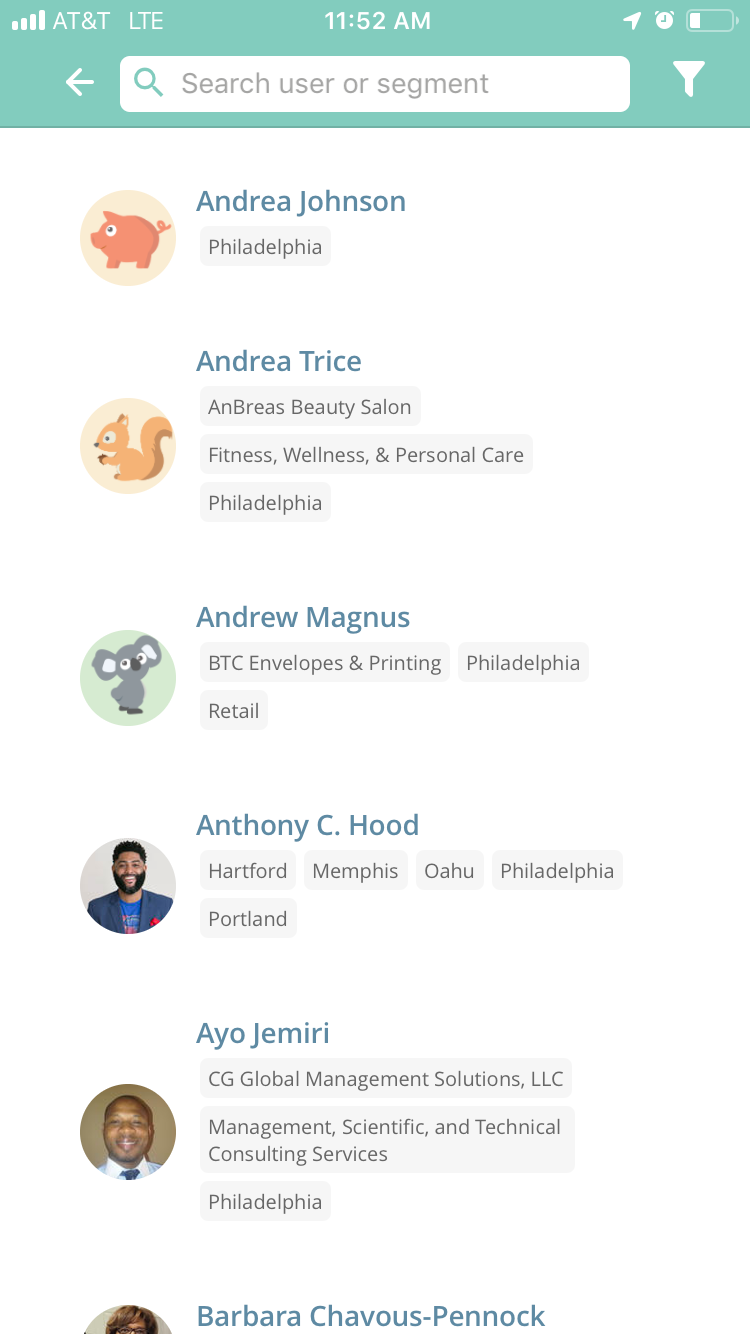Dividing and Understanding Your Users
This article gives you a brief overview of all user management tools provided to you in the admin portal and a couple that *require assistance* from the MilkCrate team.
User Types*
Teams (to be added)
Segments of Users
User Demographics*
Public Profiles
User Types
User Types are people who need a different in-app experience if they have the same experience but in different locations, you would use segmentation. For example, Concilio has two user types, general community members and parents. The two user types see different home screens, we will only be building one user type initially after your app has been running for 6 months we can discuss any additional user types.
User Type A
Users who are a part of the community member user type will see information relevant to their role within the program.
User Type B
Users who are a part of the parent user type will see information relevant to their child.
Segmentation
Publicly Accessible Segments
Public segments are a way to have users self identify and share those identities with other users. Only public segments can be manipulated by users.
New Users May Self Identify
When users are first creating an account they may identify what segments they affiliate with the most, users my also change these segments from the settings section of your app.
Users May Find One Another by Filtering Segments
They can then view the profile of other users or start a 1:1 chat.
Segments for Admin Eyes Only
Mark users as "trouble makers", "potential leaders" , or "gala attendees" that are only visible on the Admin. Again these segments can not be seen by any user within the app but can change the experience of users in the app.
Toggle off “Users Can See” to make a segment for admin eyes only.
Creating Segments in the Admin
Build Your Segment Type
Segments must be grouped into types to allow users and fellow admin to understand their purpose
Add in Your Segments
Segmenting Content for Users
The advantage of segmentation is the ability to alter what content appears within a category. For example if you had a membership option you could add the membership segment to users and the associated pieces of content to ensure only members would have access to that content. Another example would be if your program is taking place in multiple locations you would still be using the same categories but the content might be more specific to that area, like health care for your state or district. IF you want to have different categories appearing for different users you would need multiple user types, which you will have the option to add to your app after 6 months of your app being live.
Adding a Segment Onto a User
Ensure users are in the right segment by heading over to users in the admin and adding or removing segments.
Communicate With a Single Segment of Users
This includes: push notifications, poll questions, surveys, and challenges.
For example you could display a poll question only to users within the segment “over achievers”.
Provide Content to a Single Segment of Users
Below is an example of having parents with children in grades 3-5 seeing different content in the After School Curriculum category than parents with children in highschool.
Demographics
When new users set up their account they will be asked the following demographic based questions: Birthdate, Gender, Race/Ethnicity & Zip Code. Please let a staff member know during your next meeting if you would like to toggle off race/ethnicity or zip code.
Public Profiles
Public profiles offer the user a place to share details about themselves like their bio, industry, role, organization, facebook handle, insta handle, twitter handle, and a personal URL.
Editing Profiles
Profiles may be edited by both admins and users.














